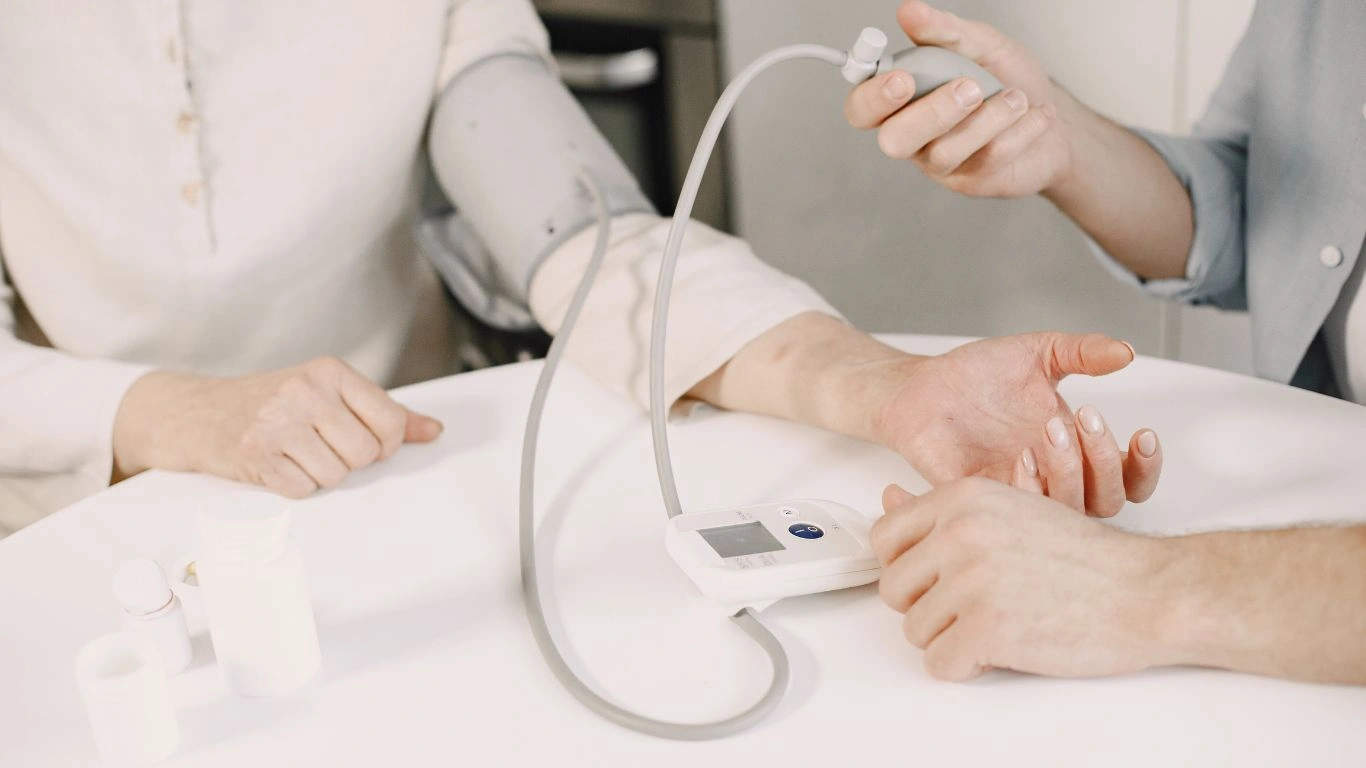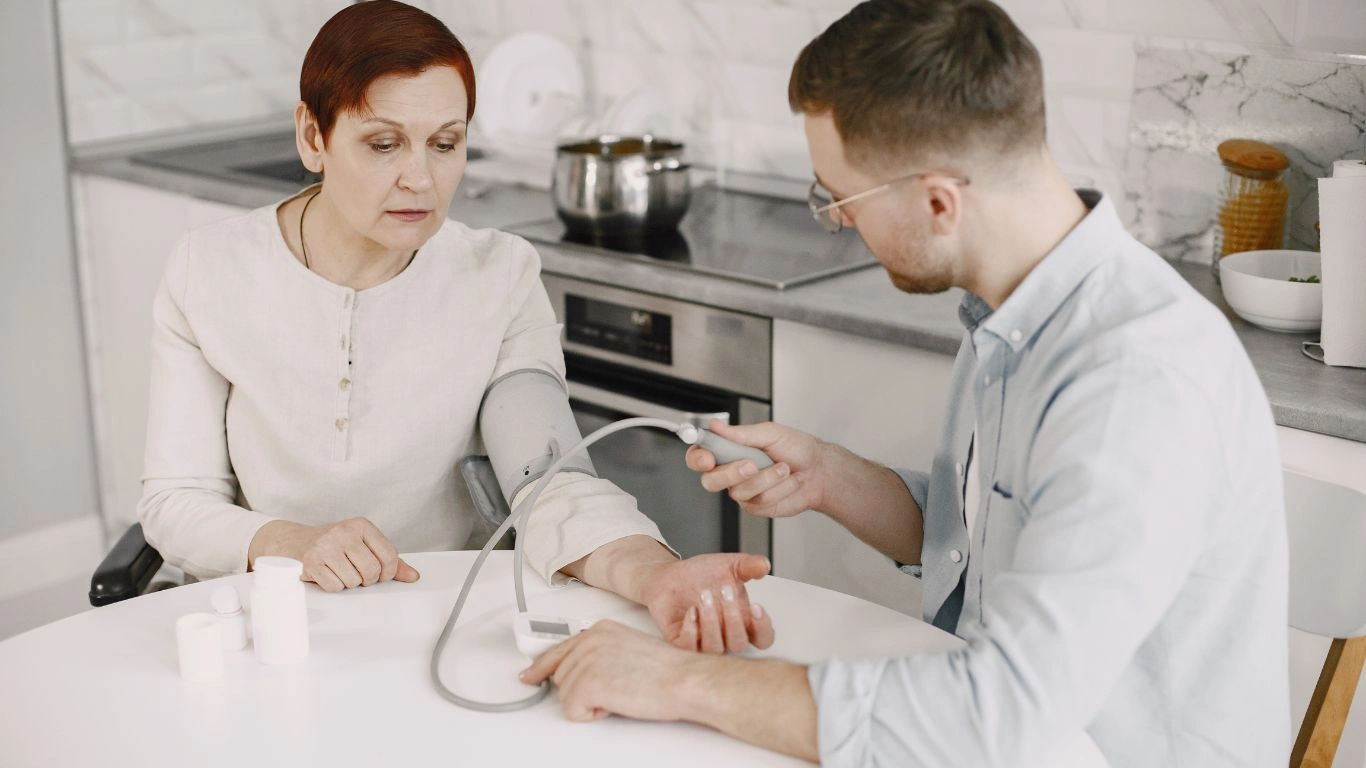How Long Walks Affect Hypertension: Simple Steps to Lower Blood Pressure
If you’ve ever wondered how long walks affect hypertension, you’re definitely not alone. As an Internal Medicine Physician specializing in hypertension management, I’ve seen firsthand how simple lifestyle tweaks can dramatically shift blood pressure numbers. Walking, in particular, is often underestimated as a powerful tool to control hypertension — but it’s one of the easiest, most accessible ways to make a difference. Let me walk you through why putting one foot in front of the other for longer periods can be a game-changer for your heart health.
Why Walking Matters for Blood Pressure Control

Many patients ask me, “Can just walking really help lower my blood pressure?” And the answer is a solid yes. The key lies in understanding what happens to your cardiovascular system during and after a long walk. When you walk briskly for an extended time — usually 30 minutes or more — your heart rate increases, your blood vessels dilate, and your body improves its ability to pump blood efficiently. This combination helps reduce the resistance in your arteries, which translates into lower blood pressure readings.
From my experience, patients who commit to regular long walks often report feeling less stressed, sleeping better, and even needing fewer medications over time. That’s not to say walking alone cures hypertension, but it’s a foundational habit that makes managing high blood pressure easier and more sustainable.
The Science Behind Long Walks and Hypertension
Walking isn’t just a casual activity; it triggers a series of physiological responses that directly affect hypertension:
- Improved endothelial function: The lining of your blood vessels (endothelium) releases nitric oxide during exercise, which helps vessels relax and widen.
- Reduced sympathetic nervous system activity: Long walks lower the body’s “fight or flight” response, calming nerves that otherwise constrict blood vessels.
- Weight management: Consistent walking helps control weight, and less weight means less pressure on the arteries.
- Enhanced insulin sensitivity: Better insulin response means less risk of diabetes, a known contributor to hypertension.
In clinic, I always encourage patients to think of walking as a low-risk, high-reward activity that complements medication and other lifestyle changes. It’s simple, requires no special equipment, and you can do it almost anywhere.
How Long Should You Walk for Hypertension Benefits?
So what’s the magic number when it comes to duration? Most guidelines suggest at least 150 minutes of moderate aerobic activity per week — which can easily be broken down into 30-minute walks, five days a week. However, the duration and consistency matter more than speed or intensity for most people with hypertension.
From my personal experience working with patients, those who walk for about 45 minutes to an hour tend to see more noticeable and sustained drops in blood pressure compared to shorter bursts. But it’s important to start where you feel comfortable and gradually build up.
Remember, the goal is to get your body moving enough to make a physiological impact but not so much that it causes strain or injury. And of course, if you have any heart conditions or concerns, check with your doctor before starting any new exercise routine.
The Role of Consistency: Making Long Walks a Habit

Walking once in a while might feel good, but the real magic happens when it becomes a regular habit. Consistency is key in managing hypertension because blood pressure doesn’t just spike and normalize once—you need ongoing effort to keep it steady.
Tips to Stay Motivated for Long Walks
- Set realistic goals: Start with what feels doable, even if it’s just 10-15 minutes, then gradually increase.
- Choose enjoyable routes: Parks, nature trails, or even your neighborhood streets — whatever keeps you engaged.
- Bring a buddy: Walking with a friend or family member can turn it into social time, making it easier to stick with.
- Track progress: Use a phone app or simple journal to log your walks and celebrate milestones.
- Listen to music or podcasts: This makes the time fly by and keeps your mind entertained.
When patients share their stories, many highlight how their walks became a cherished “me time” — a mental and physical break that made managing hypertension feel less like a chore and more like a lifestyle shift. That’s the kind of mindset that leads to long-term success.
Combining Long Walks with Other Lifestyle Changes for Better Hypertension Control

Walking alone is fantastic, but when paired with other healthy habits, it can supercharge your efforts against hypertension. Over the years, I’ve noticed that patients who embrace a holistic approach tend to experience more profound and lasting improvements. Let me share some practical tips based on my clinical experience and what actually works in real life.
Nutrition: Fueling Your Body the Right Way
Eating well plays a crucial role in blood pressure management. If you’re walking regularly but still indulging in high-sodium, processed foods, you might not see the results you’re hoping for. In my practice, I always recommend the DASH diet (Dietary Approaches to Stop Hypertension), which focuses on:
- Plenty of fruits and vegetables — rich in potassium, which helps balance sodium levels.
- Whole grains — for sustained energy during your walks and day-to-day activities.
- Lean proteins — like fish, poultry, and plant-based sources to support heart health.
- Limiting salt intake — which can otherwise raise blood pressure and counteract the benefits of your walks.
One thing I always tell my patients: think of your diet as the foundation, and walking as the reinforcement. Together, they build a stronger cardiovascular system.
Stress Management: The Invisible Player
Stress is a sneaky contributor to hypertension, often underestimated in daily conversations. Long walks, especially when taken in peaceful settings like parks or near water, can be a powerful stress buster. But pairing walking with intentional relaxation techniques takes the benefits even further. I encourage patients to try:
- Mindful breathing exercises before or after their walk.
- Gentle stretching or yoga to ease tension and improve circulation.
- Journaling or listening to calming music during their walk to create a meditative experience.
In my years treating hypertension, I’ve seen how reducing stress not only lowers blood pressure but also improves medication adherence and overall quality of life. It’s a win-win.
How Long Walks Affect Hypertension in Different Age Groups

Not everyone’s body reacts the same way to exercise, and age can influence how long walks impact blood pressure. As someone who has managed hypertension in a wide range of patients—from young adults to seniors—I find it important to tailor recommendations.
For Younger Adults
In younger individuals diagnosed with hypertension, long walks can be a critical part of a proactive lifestyle. The cardiovascular system is typically more resilient at this age, so walking can help maintain vascular health and prevent complications down the road. I often recommend mixing brisk walking with other moderate activities like cycling or swimming for variety and added cardiovascular benefit.
For Older Adults
For seniors, walking remains a safe and effective exercise to control blood pressure, but it requires some extra attention:
- Start slow and build gradually. I always advise older patients to listen to their bodies and avoid overexertion.
- Focus on balance and stability. Including short walks on even surfaces helps prevent falls.
- Consider group walks. This can boost motivation and social interaction, which has its own heart-health benefits.
One patient I worked with, an 72-year-old woman with longstanding hypertension, shared how her daily 45-minute walks transformed not just her blood pressure, but her mood and independence. Stories like hers remind me that walking is not just medicine—it’s quality of life.
Special Considerations for People with Severe Hypertension or Other Conditions
For those with very high blood pressure or related health issues, jumping into long walks without guidance might be risky. I always emphasize the importance of medical clearance and starting with shorter, supervised sessions. In some cases, walking can be combined with monitored rehab or physical therapy to ensure safety.
Tracking Progress: Measuring the Impact of Your Walks on Hypertension

Tracking your blood pressure regularly is key to understanding how your walks are impacting your health. In my clinic, I encourage patients to keep a log of their readings along with notes on their activity levels. This approach helps pinpoint patterns and motivates continued effort.
Simple Ways to Monitor Your Progress
- Use a reliable home blood pressure monitor. Check readings at consistent times, ideally before and after walks.
- Maintain a journal or digital app. Recording your walks alongside your blood pressure helps you see the connection clearly.
- Celebrate small wins. Even a slight reduction in systolic or diastolic pressure is progress.
- Discuss your data with your doctor. Regular follow-ups ensure your walking routine aligns well with any medication plans.
By combining walking with proper monitoring, you take charge of your hypertension management and create a feedback loop that keeps you motivated and informed.
Incorporating Long Walks into a Busy Life: Practical Tips That Work

Let’s be honest—life gets hectic. Between work, family, and endless responsibilities, finding time for a 30- to 60-minute walk might feel like a luxury. But based on years of managing patients with hypertension, I can tell you this: even with the busiest schedules, it’s possible to make walking a natural part of your day without it feeling like a chore.
Breaking Up Your Walks
Not everyone has the luxury of a full hour at once, and that’s perfectly okay. Splitting your walking into smaller chunks—say, three 15- or 20-minute sessions throughout the day—still provides significant benefits for blood pressure control. I often tell my patients that the total time moving matters more than whether it’s continuous.
Try taking a brisk walk during lunch breaks, a quick stroll after dinner, or even pacing around while on phone calls. These little pockets of movement add up more than you think and can be surprisingly effective.
Walking as a Social Activity
One of my favorite patient stories is about a man who initially struggled to stay motivated. When he started inviting his neighbors for evening walks, it suddenly became something he looked forward to. The social element made all the difference—turning exercise from a “task” into quality time.
If you can, team up with friends, family, or even join a local walking group. Having accountability and companionship often keeps people on track and adds an enjoyable dimension to their health journey.
The Long-Term Impact: What to Expect When You Commit

When patients ask me, “How long until I see results from walking?”, my honest answer is—it varies. But with consistency, most people start noticing improvements in blood pressure within a few weeks to a couple of months.
From my clinical experience, these improvements are not just numbers on a chart. Patients report feeling more energetic, experiencing fewer headaches, better sleep, and an overall boost in mood. These are the subtle but powerful signs that your cardiovascular system is healing.
Why Patience and Persistence Matter
Hypertension isn’t a quick fix condition, and neither is reversing its effects. I always stress that walking is part of a bigger picture—a commitment to self-care that unfolds over time. If you slip up or miss a few days, don’t beat yourself up. The goal is progress, not perfection.
In my practice, I’ve seen patients who keep up their walking routine over years maintain better blood pressure control, reduce the need for medications, and enjoy a higher quality of life. That’s a powerful motivator to keep moving.
When to Talk to Your Doctor About Your Walking Routine
While walking is generally safe and effective, there are times when medical advice is essential. If you experience any of the following, reach out to your healthcare provider before continuing or starting a new walking regimen:
- Chest pain, dizziness, or unusual shortness of breath during or after walking.
- Sudden swelling in your legs or ankles.
- Severe or uncontrolled hypertension despite lifestyle changes.
- Any other new or worsening symptoms related to your heart or overall health.
Remember, your doctor can help tailor your exercise plan to your specific needs and ensure that your walking routine safely supports your hypertension management.
References
Disclaimer
This article is intended for informational purposes only and does not replace professional medical advice, diagnosis, or treatment. Always consult with your healthcare provider before starting any new exercise routine, especially if you have pre-existing health conditions or concerns. The content here reflects my personal clinical experience as an Internal Medicine Physician specializing in hypertension management, combined with current best practices in cardiovascular health.

Dr. Gwenna Aazee is a board-certified Internal Medicine Physician with a special focus on hypertension management, chronic disease prevention, and patient education. With years of experience in both clinical practice and medical writing, she’s passionate about turning evidence-based medicine into accessible, actionable advice. Through her work at Healthusias.com, Dr. Aazee empowers readers to take charge of their health with confidence and clarity. Off the clock, she enjoys deep dives into nutrition research, long walks with her rescue pup, and simplifying medical jargon one article at a time.






